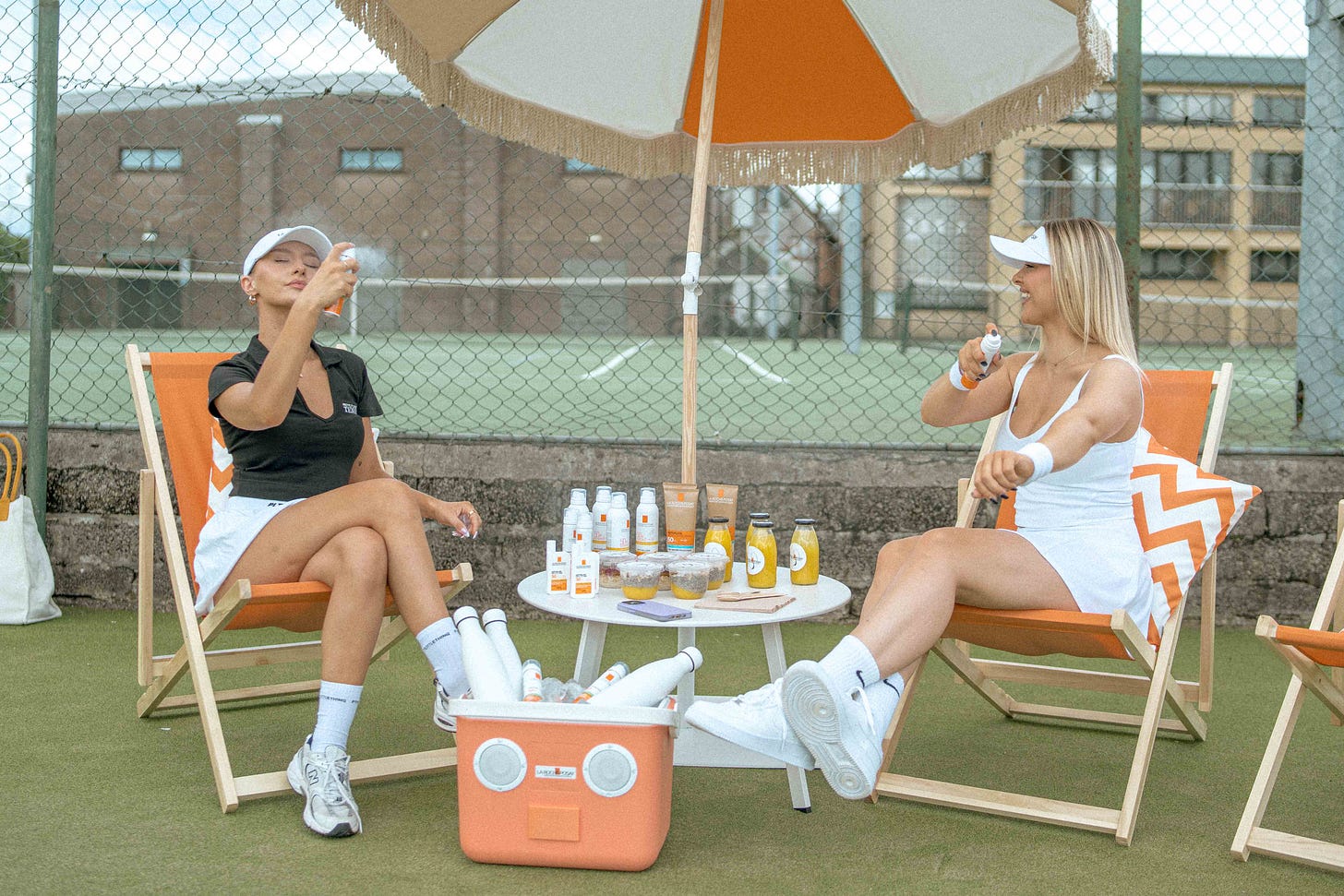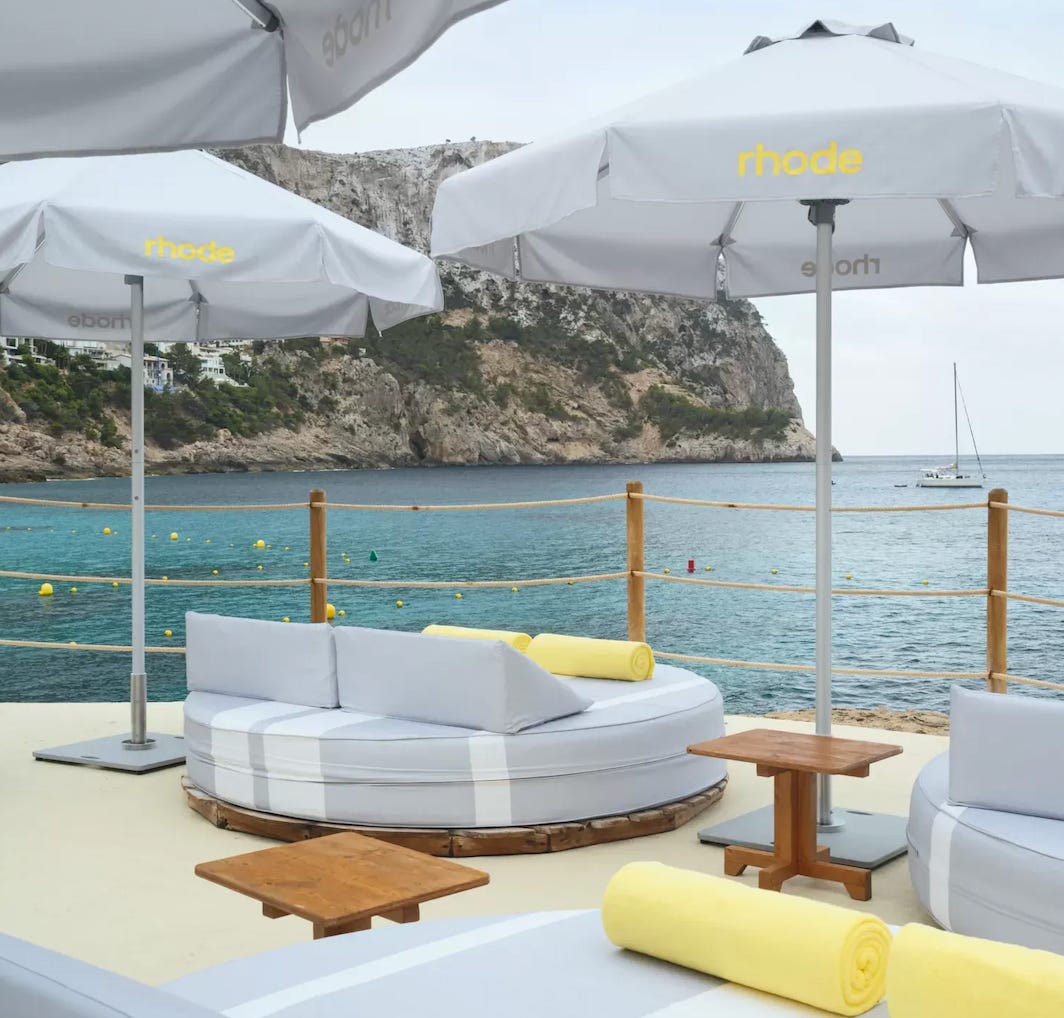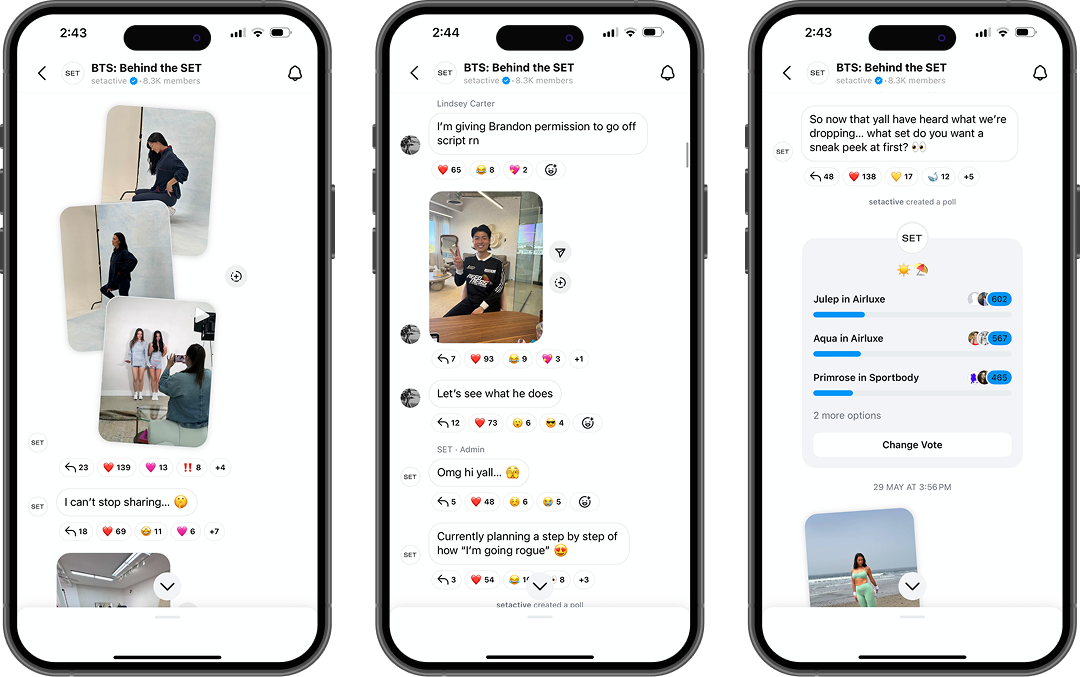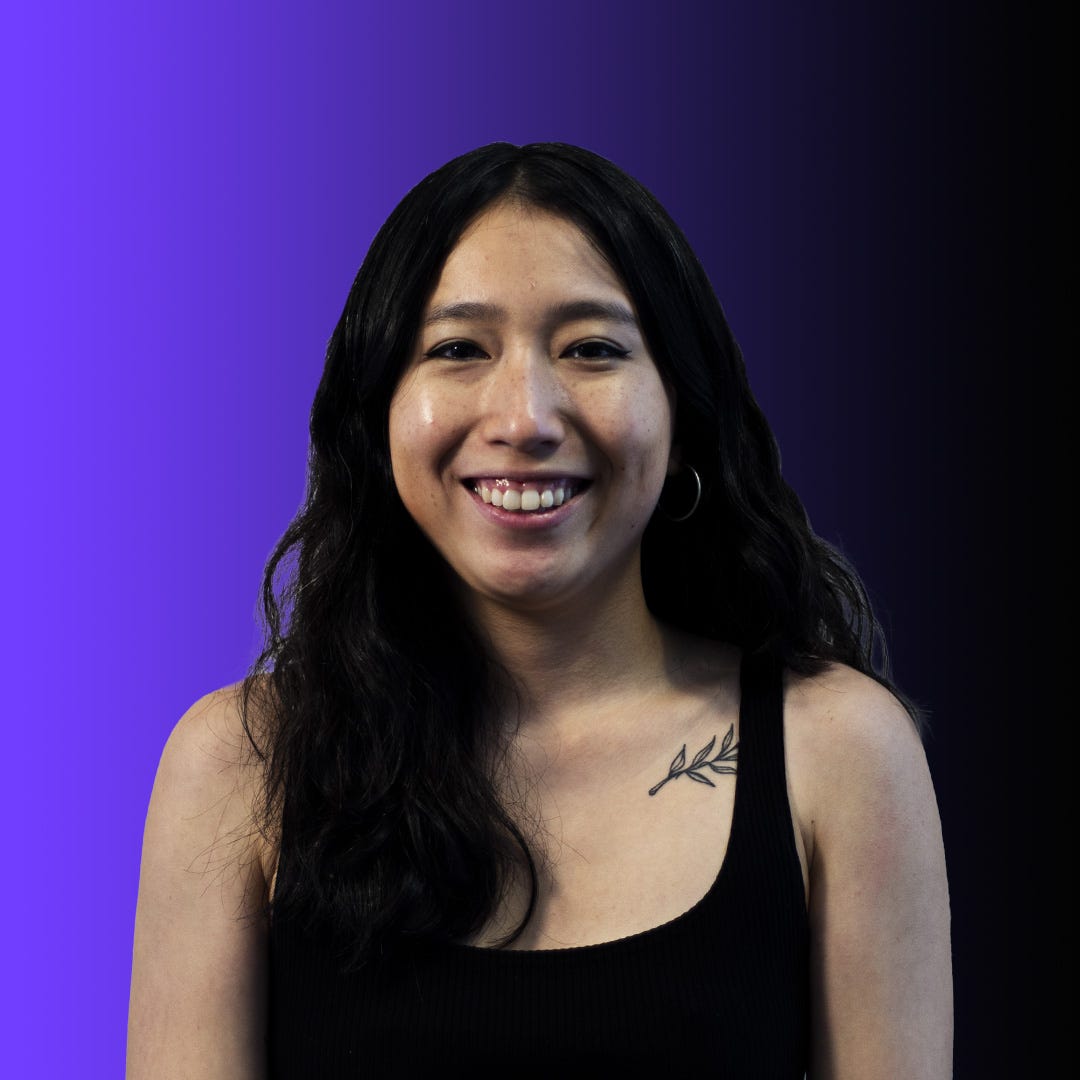There is one thing that beats a Jet2 holiday…
📰 NoGood News | Vol. 98
Hi NoGoodies 👋
Welcome to NoGood news where we talk about all things marketing — the good and not so good.
ICYMI, Wimbledon was a hot topic this month—not just for tennis players—but for brands. From “Wimbledon white” OOTDs to brand activations, they rebranded tennis as an aesthetic, not a competitive sport.
Pop-ups are out, branded summer clubs are in. Brands like Rhode and Jaquemus tapped into a deeper desire consumers are feeling: aspirational lifestyles and perhaps even a Euro Summer vacation?
We’re in a pandemic —the algorithm fatigue pandemic. As social platforms like TikTok evolve into entertainment-first ecosystems, the original promise of connection and community, suddenly disappears. Enter: closed brand communities.
A little TL;DR moment for you:
Are brands turning Wimbledon into luxury events?
Read about how brands turned tennis into an aspirational sport
Are pop-ups going out of style?
The anti-algorithm era is here
Learn about algorithm fatigue and the rise of closed communities
Ready? Let's get into it.
🎾 Are brands turning Wimbledon into luxury events?
Read about how brands turned tennis into an aspirational sport
Serena Williams walked so Wimbledon season could run.
Wimbledon is trending and not just for the matches.
It's the brands showing up courtside that have everyone watching.
Tennis season isn’t just a sports moment anymore, it’s a cultural moodboard.
So why are brands treating tennis like a luxury event rather than just a game?
Because it is.
Tennis has become a masterclass in aesthetic storytelling, lifestyle branding, and cross-industry influence.
Luxury fashion houses know it and they’re moving accordingly.
We’ve got Ralph Lauren dressing Wimbledon officials.
La Roche-Posay and Nike on ASOS hosting dinner activations on the court.
Think Zendaya in Challengers but IRL.
Tennis gives brands permission to tell stories that extend beyond sport — touching wellness, travel, fashion, and performance all at once.
It invites brands to participate in a slower, more elegant kind of spectacle and audiences eat it up.
Why?
Because it invites people into a story they want to live in.
Tennis season doesn’t end with the final match.
It lingers in closets, Pinterest boards, and Instagram grids all year long.
What are your thoughts on brands tapping into Wimbledon season?
☀️ Are pop-ups going out of style?
Dive deeper into the rise of branded summer clubs
Pop-ups are out, branded summer clubs are in.
More and more brands are launching seasonal “clubs” that show up in the form of beach and resort-style setups.
All eyes are on the Jacquemus beach club in Monte Carlo and Rhode’s summer club in Mallorca.
But why are summer clubs suddenly the move?
Because they do what a social post or influencer campaign can’t:
They bring the brand world to life.
It’s the art of a temporary escape, especially when everyone’s already dreaming of a summertime vacation.
It taps into a deeper desire for consumers—they don’t just want to buy things, they want to be a part of the lifestyle.
Branded summer clubs create hype, but they also create stories, bringing brands to life without specifically pushing products.
It’s about building a world so aspirational that emotional proximity might be more powerful than a purchase.
What are your thoughts on the rise of branded summer clubs?
📱 The anti-algorithm era is here
Learn about algorithm fatigue and the rise of closed communities
People aren’t seeing what they want to see on their feeds anymore. As algorithms prioritize engagement over relevance, brand content often gets lost in a sea of noise and the same viral trend that gets repurposed over and over until the point of oversaturation.
In response, more brands are turning to closed, invite-only communities—spaces where they can connect directly with their most engaged audiences without the interference of public algorithms. These private environments enable deeper conversations, build trust, and foster long-term loyalty in ways that open social channels no longer can.
Types of Closed Brand Communities
Platform-Native Social Communities: these live within existing social platforms, making them easy to activate and accessible for your audience.
Instagram Close Friends Stories
Discord Servers
Content-Gated Communities: these communities form around access to premium, exclusive content—usually via subscription or paywall.
Paid Substacks or Newsletters
Patreon Tiers
Owned & Customizable Communities: for brands looking to build a fully branded, controlled environment, these platforms offer flexibility and depth.
Branded Apps or Loyalty Portals
Notion or Airtable Hubs
🎙️ Q&A with an expert
A bi-weekly interview series with the best in the game
Q: What exactly does Google indexing public Instagram posts mean for SEO?
A: Great question—and one that’s been causing a buzz across SEO and social media teams. When we say that Google is indexing public Instagram posts, we mean that these posts are becoming discoverable via search engines and will now surface on SERPs. That’s a big shift. Historically, most Instagram content was locked behind the app’s interface. You could search for profiles, but not for individual posts or content types like Reels or carousels. With this latest update, your (public) Instagram content can contribute to your brand’s overall search visibility, especially for branded or topical queries.
Q: How should brands optimize their content now that they can appear in Google search results?
A: Treat social posts like mini landing pages. Caption structure, hashtag strategy, and even alt text on Instagram images could start to play a small role in discoverability. That being said, don't overdo it with keywords—Google’s not rewarding spammy captions. Instead, focus on writing naturally and making your content genuinely useful or interesting. The goal is to add value, not just visibility. Relevance still beats reach when it comes to lasting impact to your brand presence.
✍️ We wish we wrote this
Articles that caught our eye these past 2 weeks:
Does anything beat a Jet2 Holiday?
Can Instagram be a powerful SEO tool thanks to its latest update?
Feeling lazy? Ask your ChatGPT Agent for help
👀 Keeping up on the socials
Because IYKYK is better than FOMO:
It’s not a good week for Astronomer’s CEO
The Touchland and Crocs collab is a Gen Z product we never saw coming
Did Poppi copy Be Amazing’s Amaya Papaya idea?
What happened to Duolingo?
🔥 Trend Radar: Blow up or fall behind
The trending topics, sounds, and formats to key and eye on:
overlay text: write what you’re about to do then say, “if that’s okay with you” at the end
overlay text: write about something good, then when the song says “I grieve different” write the negative outcome of it
popular lip sync from Amaya in Love Island
post a video of your travel plans gone wrong
🚀 Ready to meet your NoGood partner?
Tell us where you are and where you want to be — and we’ll help get you there.





